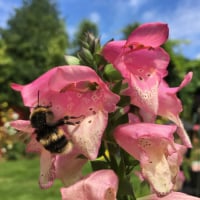This Forum will close on Wednesday 27 March, 2024. Please refer to the announcement on the Discussions page for further detail.
Lamium purpureum (deadnettle) - for bumblebees
 Big Blue Sky
Posts: 716
Big Blue Sky
Posts: 716
in Plants
I have read that lamium purpureum is one of the plants most preferred by bumblebees. Apparently it flowers all summer long and doesn’t require any particular care.
I was wondering if anybody has made any experience with this plant, in particular, I would like to know how fast it spreads.
I try to make my garden as bee friendly as possible and this plant was recommended online as one of the most useful for insects as it starts flowering in March when there isn’t enough food for them, and keeps going until October.
But I have quite a small garden, so wouldn’t want to introduce an invasive plant there. Thank you ☺️
I was wondering if anybody has made any experience with this plant, in particular, I would like to know how fast it spreads.
I try to make my garden as bee friendly as possible and this plant was recommended online as one of the most useful for insects as it starts flowering in March when there isn’t enough food for them, and keeps going until October.
But I have quite a small garden, so wouldn’t want to introduce an invasive plant there. Thank you ☺️
Surrey
0
Posts
It looks like some of the varieties are very aggressive, but there seem to be more manageable ones too. If in doubt, I would plant it in a container, so you and the bees can enjoy it, but it can't escape! Just make sure it doesn't seed itself!
Gardening in Central Norfolk on improved gritty moraine over chalk ... free-draining.
https://www.rhs.org.uk/Plants/9818/Lamium-orvala/Details
Lamium maculatum is perennial and holds on much tighter to the soil,
bees love both.
In the sticks near Peterborough
“It's still magic even if you know how it's done.”